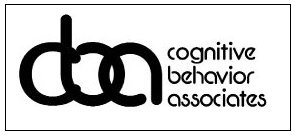What is Psychosis?
Psychosis occurs when thoughts and emotions become so impaired that the person loses contact with external reality. Psychosis affects between 1% and 3% of the population and typically first emerges between the ages of 15 and 30. Psychosis a core feature of several mental health disorders broadly termed "psychotic-spectrum disorders." These include Schizophrenia, Schizoaffective disorder, Delusional disorder, Schizophreniform disorder, Brief psychotic disorder, and Psychosis associated with a medical condition or substance use. Severe forms of Bipolar disorder, Depression, PTSD, and Borderline Personality Disorder can also include elements of Psychosis (e.g., hallucinations, paranoia). Contrary to what is often portrayed in movies, Psychosis or Schizophrenia is not "split-personality" disorder. Below we will discuss the core elements of Psychosis and how Cognitive Behavioral Therapy, typically in conjunction with medication, can help.
Positive symptoms
In comparison to a person without Psychosis, positive symptoms are experiences that are present that are typically not present. These symptoms generally are the defining feature of Psychosis. These include:
- Hallucinations: perceptual experiences that occur without an external stimulus, i.e., seeing or hearing something that other people don't see or hear.
- Auditory hallucinations are the most common, but hallucinations can occur in any of the five senses.
- Delusions: fixed beliefs that do not change, even with conflicting evidence. The belief is not ordinarily accepted by other members of the person's culture.
- There are many types of delusional beliefs, but common ones involve persecution (e.g., "the CIA is spying on me") or grandiose delusions (e.g., "I am solely responsible for relaying messages between world leaders").
Negative symptoms
In comparison to a person without psychosis, negative symptoms are feelings or behaviors that should be present that are now absent. While these symptoms alone do not warrant a psychotic-spectrum disorder diagnosis, they are important to consider because they are associated with impairment in work, school, and social activities. Negative symptoms often remain even after positive symptoms have resolved with medication. These symptoms include:
- “Flat” or blunted emotions
- Little speech or communication
- Lack of motivation
- Decreased ability to enjoy things
- Social withdrawal
CBT for Psychosis
Cognitive Behavioral Therapy for psychosis (CBTp) is an evidence-based treatment for schizophrenia and other psychotic-spectrum disorders. It has been thoroughly researched and consistently shown to significantly improve positive symptoms, negative symptoms, mood, and anxiety when compared to medication-only or supportive counseling (Thase, Kingdon, & Turkington, 2014). CBTp is typically conducted as an adjunct to medication and has even been shown to help individuals who do not show improvement with medication. Because of this strong research support, international guidelines have recommended the use of CBTp for individuals with psychosis (NICE, 2014; Dixon et al., 2010).
Psychosis Treatment Overview
CBTp is typically conducted over 16 or more individual sessions. If relevant, it is often helpful to include family members or caregivers in some sessions to keep everyone on the same page. Treatment begins with a thorough assessment in order to understand the timeline, triggers, and specific psychotic experiences of the client. As opposed to other psychosocial or supportive counseling approaches, CBTp specifically targets symptoms by:
- Collaborating to develop an understanding of the positive and negative symptoms;
- Normalizing the psychotic experience to address the stigma that is often associated with psychosis; and
- Using various techniques to pursue the goal of reducing distress related to symptoms.
CBTp clinicians usually collaborate with psychiatrists to give consistent care regarding medications. Importantly, CBTp is associated with improved medication adherence, which is critically important for preventing relapse. Depending on the needs of the client, CBT techniques can also be used for common co-occurring disorders, such as social anxiety, depression, and sleep disturbances.
Early Intervention
Accumulating research shows that early intervention in Psychosis is associated with improved outcomes in symptoms and the person's ability to work, go to school, and engage in social activities (Kane et al., 2016; Am J Psychiatry). Most people who are later diagnosed with a psychotic disorder report that they began to experience mild versions of psychotic symptoms for 2-3 years before their first full psychotic episode. For example, a teenager might start to wonder if others can read his/her mind but is not convinced that this is true. These mild symptoms plus behavioral changes such as withdrawing socially, decreased performance at school, and decline in personal hygiene, might warrant an evaluation. While addressing these symptoms may be difficult, it is highly recommended to seek professional care as soon as symptoms start or concerning behavioral changes are apparent.

